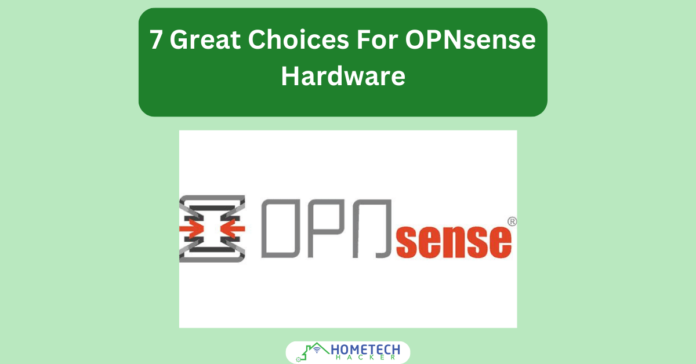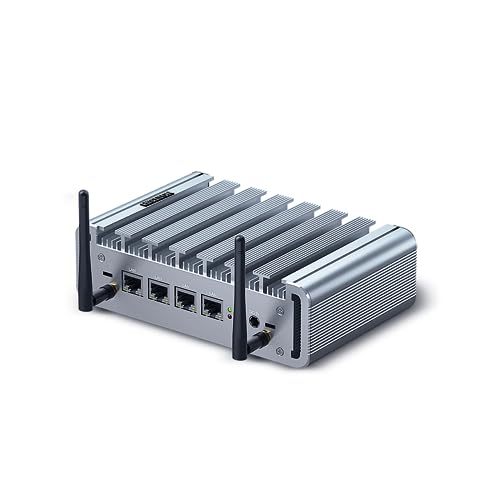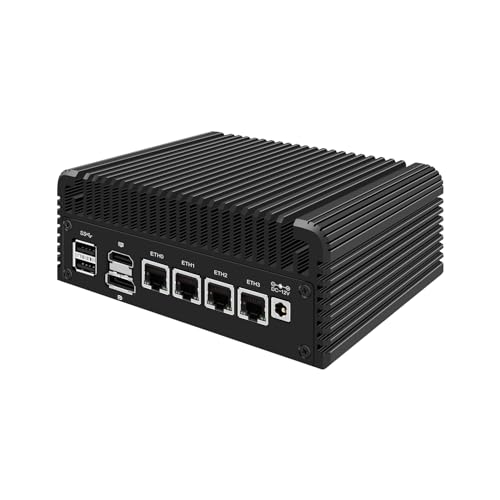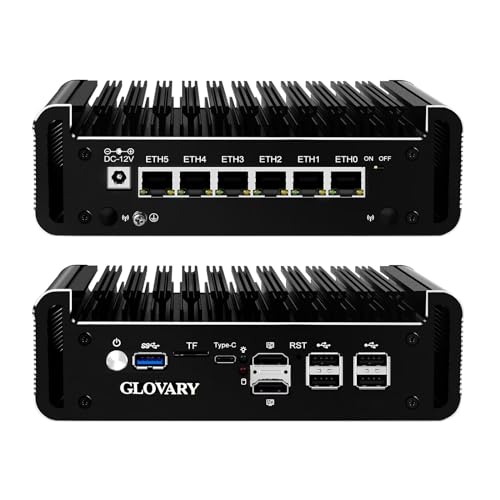
OPNsense is great router software that is gaining in popularity. I run pfSense, but if I were building a router from scratch today, I might go with OPNsense because it is a great alternative. The first step to building a DIY router is to pick the right hardware. In this article, we’ll cover some great and cost-effective OPNsense hardware options.
This page contains affiliate links. If you purchase an item using an affiliate link I will receive a small commission at no cost to you. Affiliates do not influence my recommendations. Read my disclosures for more information.
OPNsense hardware requirements
The minimum requirements for OPNsense hardware are fairly low. It doesn’t take much to have a box that is powerful enough:
| Processor | 1 GHz dual core cpu |
| RAM | 2 GB |
| Install method | Serial console or video (vga) |
| Install target | SD or CF card with a minimum of 4 GB, use nano images for installation. |
However, OPNsense official recommends slightly more powerful hardware:
| Processor | 1.5 GHz multi core cpu |
| RAM | 8 GB |
| Install method | Serial console or video (vga) |
| Install target | 120 GB SSD |
If you get a box with these specs, you can pretty much run any OPNsense feature. Most people could get by with less than these specs, but you want to exceed the minimum. I also recommend getting a box with at least two Intel NICs. There are ways to get by with one NIC, and non-Intel NICs can work, but getting two and sticking with Intel increases your chances of sustained success.
Editor’s note: These options will all work great for pfSense too!
Option #1: Protectli Vault FW2B
This is a tried and true option used by many OPNsense users. It is fanless and comes with enough power and storage to meet the hardware needs of most OPNsense router builds. If you are looking for a budget small-form factor build this should be on your shortlist.
You can also get a barebones version of the FW2B for less and supply your own RAM and SSD.
Option #2: HISTTON OPNsense Micro Firewall Appliance
HISTTON Firewall OPNsense Micro Firewall Appliance Fanless PC 2.5GbE LAN Gigabit Celeron J4125 Router PC, 8GB RAM 128GB SSD, OPNsense Firewall PC AES-NI, HD, VGA, SIM Slot, Compatible with Pfsense
- 【Powerful Processor & OS】➥The mini firewall pc equipped with 4 Cores 4 Threads Intel Celeron J4125 Processor (4M Cache, up to 2.70 GHz), Intel UHD Graphics 600. Pre-installed Windows 10 Pro(activated), support Windows 11, it also supports other Open source system, such as Ubuntu, PF-Sense, CentOS, OPNsense, Debian, Vmware ESXi, VyOS, Untangle, etc.
- 【4 x 2.5Gbps LAN & 4G Network Applicance】➥The small firewall computer has 4 x Intel 2.5Gbps Nic ports (I225-V 2.5G), the application field is very wide. The firewall hardware use as network server, LAN Or WAN router, VPN device, DHCP server, DNS server and IDS/IPS, and can also be configured as a commercial firewall. The Mini industrial computer has a built-in SIM card slot to enjoy 4G WIFI network and surf the Internet everywhere (4G module and SIM card are not included).
This is a step up from the Protectli FW2B without a large step up in price. It has a more powerful processor, more network ports, and those network ports are all of the faster 2.5GbE variety.
As a bonus, it has a SIM card slot that you may be able to use as an additional WAN connection. I also like the fact that it isn’t black, unlike most router options.
It also comes as a 6-port version if you need to manage multiple VLANs and for other uses.
Option #3: HUNSN Micro Firewall Appliance
Micro Firewall Appliance, Mini PC, OPNsense, VPN, Router PC, Intel 12th Gen Core I3 N305, HUNSN RJ35, GPIO, TF Slot, HDMI, DP, 4 x 2.5GbE I226-V, 8G DDR5 RAM, 128G SSD
- HUNSN RJ35 equipped with intel gen 12th alder lake-n core i3 n305 processor, compatible with many freebsd based router systems, linux distros, or win.os supported, easy configuration and management, support intel aes new instructions
- Compatibility, firewalls for pfsense plus, opnsense and other popular open-source software solutions, supports UEFI only
This option is more expensive than our other options, but it may be worth it for you. It comes with a more modern and powerful CPU, plenty of RAM and hard drive space. It also features four 2.5GbE LAN/WAN ports if you want to exceed gigabyte speeds. You would have no problem running beefy IDS/IPS on this machine.
It also has a barebones option for those who want to supply their own RAM and hard drive.
Option #4: Qotom Q355G4
This box is similar to the Qotom small form factor device I’ve been using to run my pfSense firewall for the last few years. It has been rock solid. This particular device is more powerful than the one I’ve been using and will do well as an OPNsense appliance.
You can save a little money and go with the barebones version of this hardware if you already have RAM and an SSD, or you want to pick your own.
Option #5: Official OPNsense hardware

OPNsense has a shop where they sell OPNsense routers. At the time of writing this article, the least expensive option in their shop was $615 USD, which is more expensive than many DIY options. However, even their lowest-end model would be sufficient for most home networks, and it would be officially supported and have a warranty. This is the easiest path to getting an OPNsense router up and running.
Option #6: Repurpose an existing computer
If you have an unused PC you can probably re-purpose it to being a router. You might need to buy an additional network card for LAN and WAN connections, but chances are the rest of the hardware will work fine. The downside is that this machine will probably use much more electricity than the other options, and it will need to always be on. But, it is a good choice if you have the hardware already.
Option #7: Go virtual
You can also use your old hardware (or new) to make a virtual OPNsense router. I used to run pfSense on a virtual machine and it had its benefits. A virtual router can have a lot of advantages, including:
- Snapshots – Easy to roll back if you mess up a configuration
- Scalability – Need a more powerful router? No need to buy new hardware, just allocate more power to your virtual router
- Portability – You can easily move a VM from one machine to another
You could combine options 6 and 7 and build a virtual router on an old PC.
You can find good choices for small-form-factor virtualization servers here.
Bonus options
Here are some additional options you might consider that are bestsellers at Amazon
Final thoughts
There are tons of great and affordable OPNsense router hardware options available. It’s hard to go wrong with any of them. Just pick the best one that works for you.
OPNsense makes good solid options, but you can save some money by going virtual or building your own router. No matter how you go, OPNsense is a great choice for a home router. If you think OPNsense might not be for you, check out these Wi-Fi router recommendations.
These hardware options will work for pfSense and other router software as well. I run pfSense on my router for many reasons. Conversely, my recommendations for pfSense router hardware will also work well for OPNsense.
Interested in supporting HomeTechHacker?
Have you found the content on this site useful? If so, are you interested in supporting me and this site? There’s no obligation of course, but I would really appreciate any support you can give. Below are a few ways you can show support:
Thank you! I really appreciate it!










